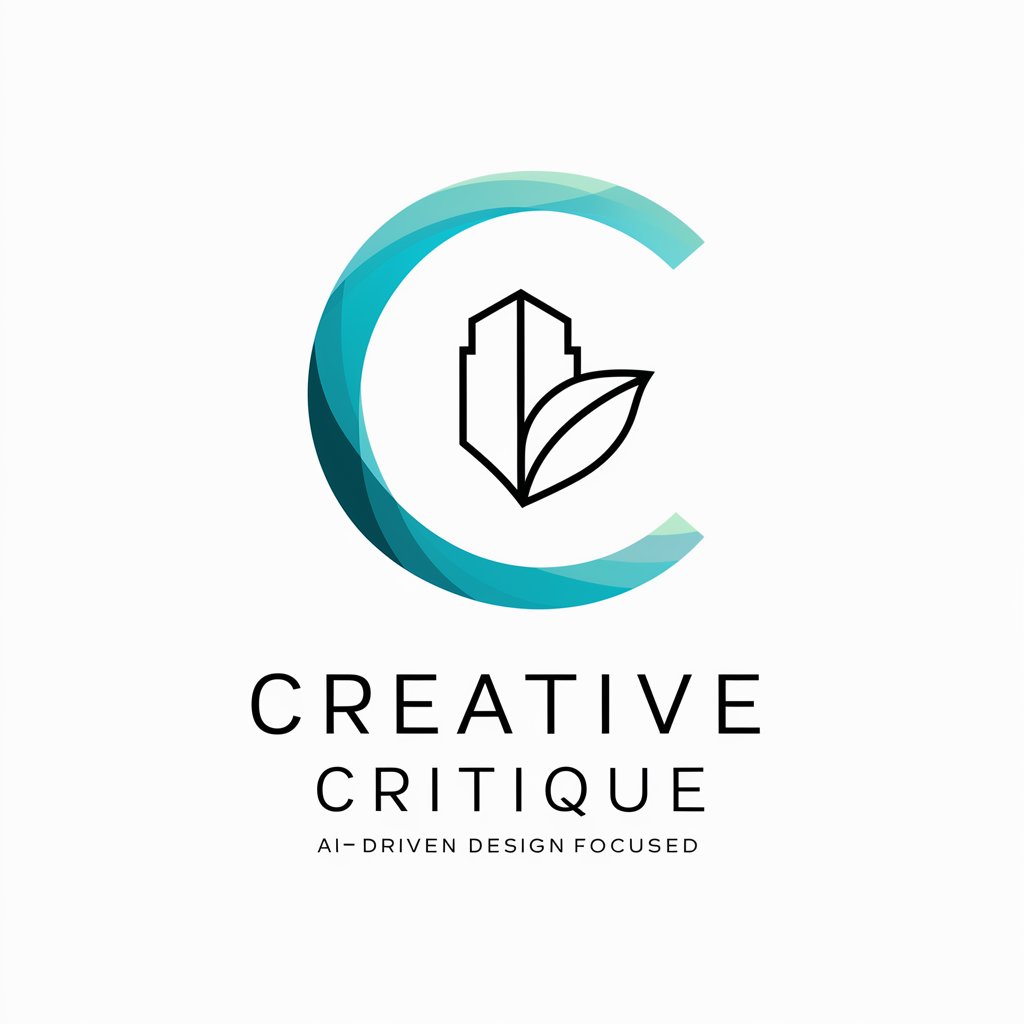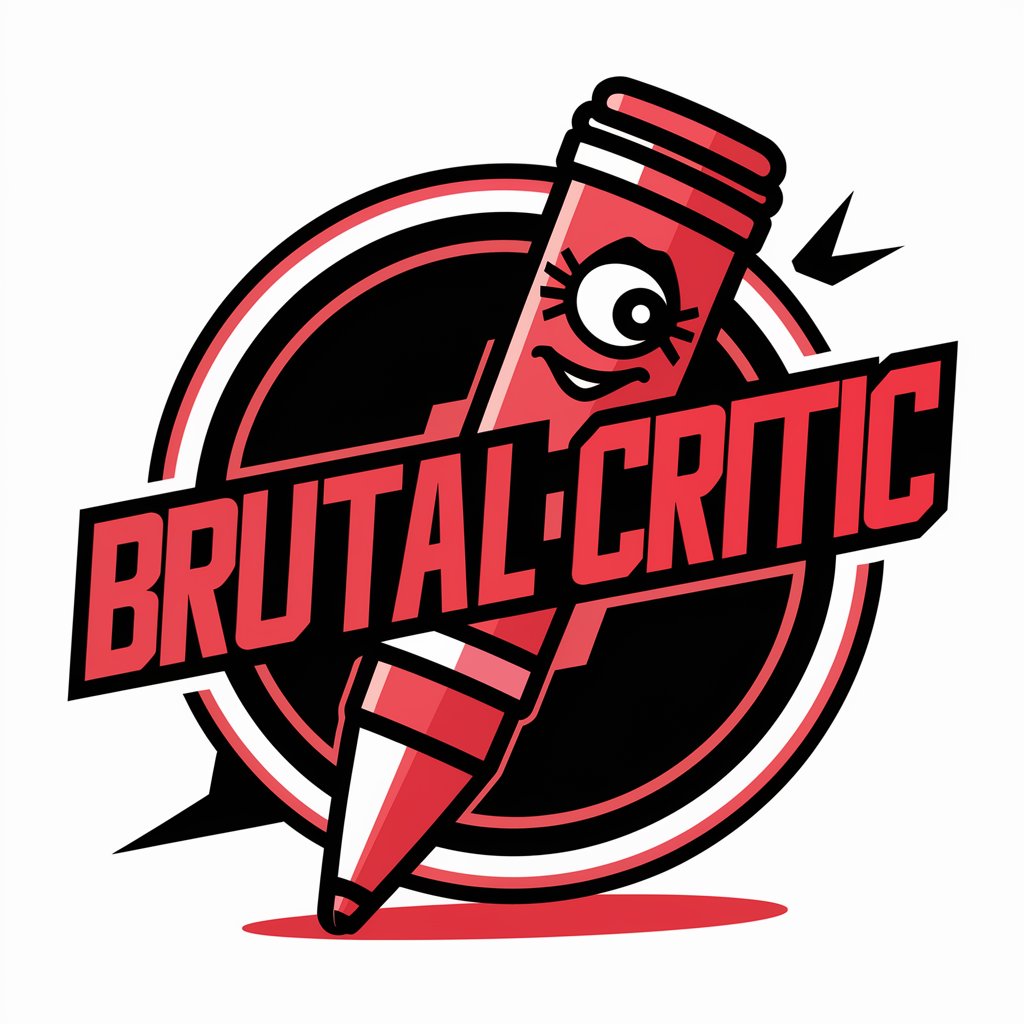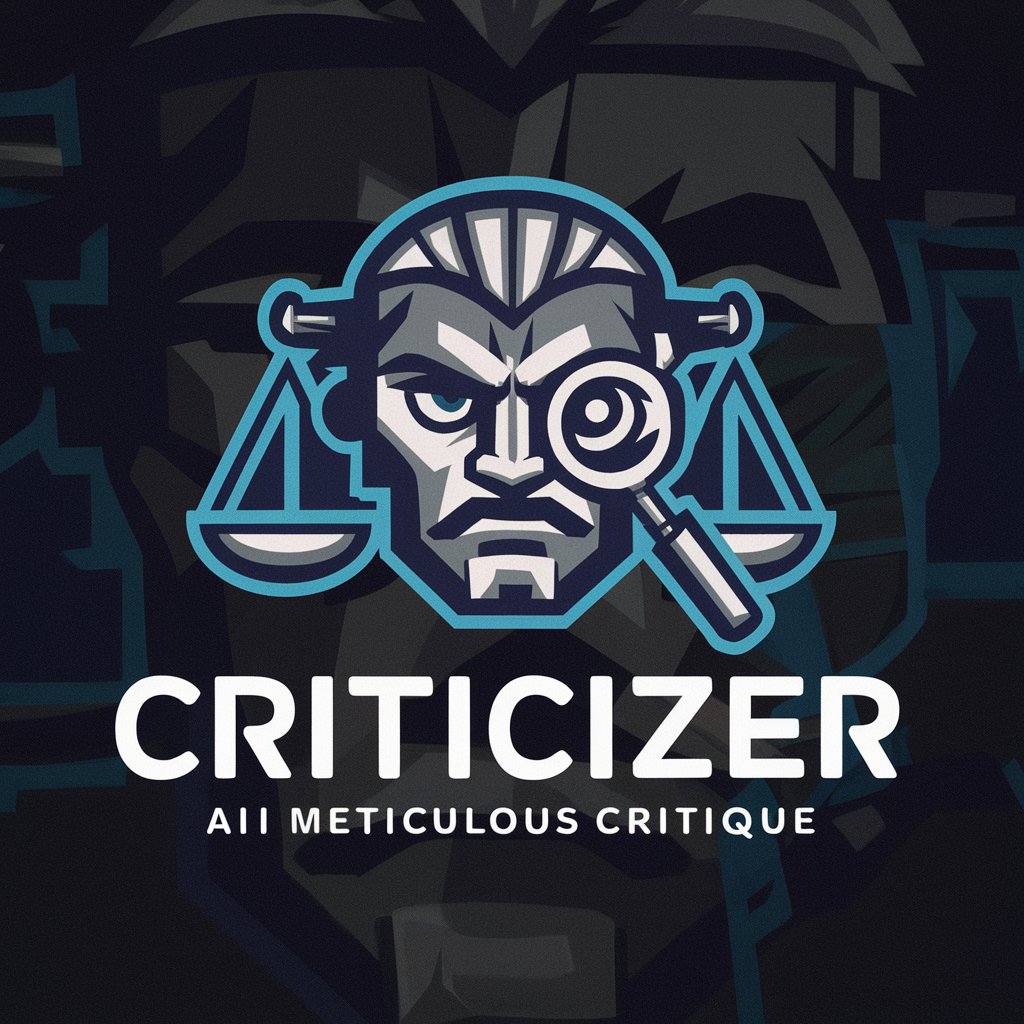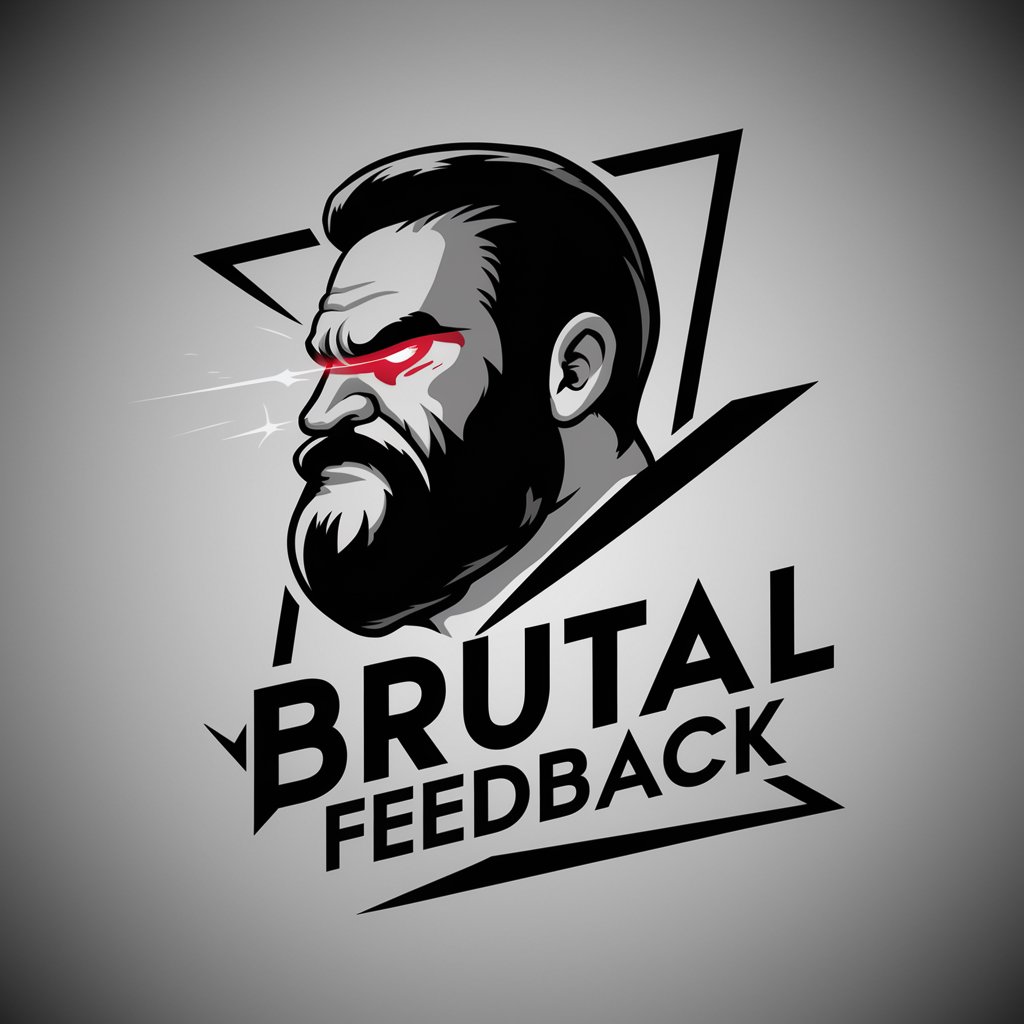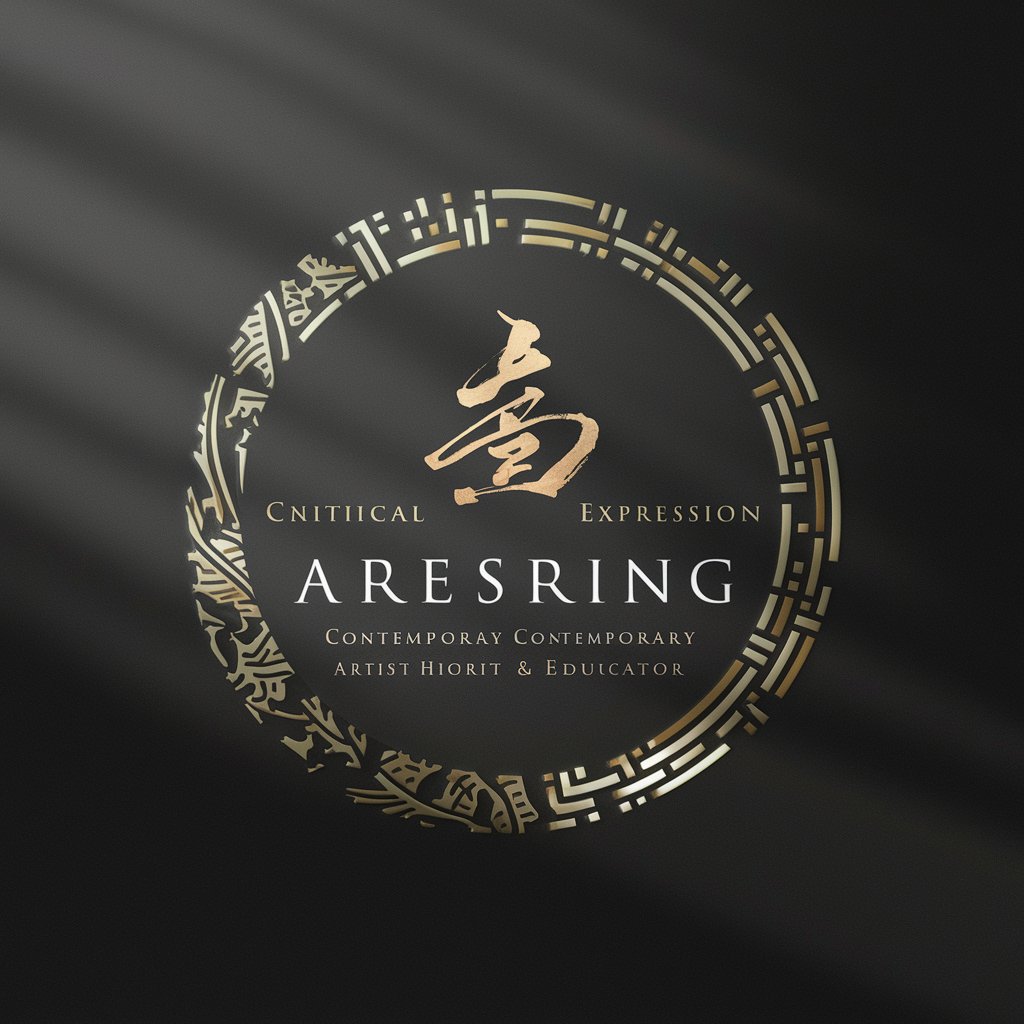
Constructive Criticism Guide - Effective Criticism Response Aid
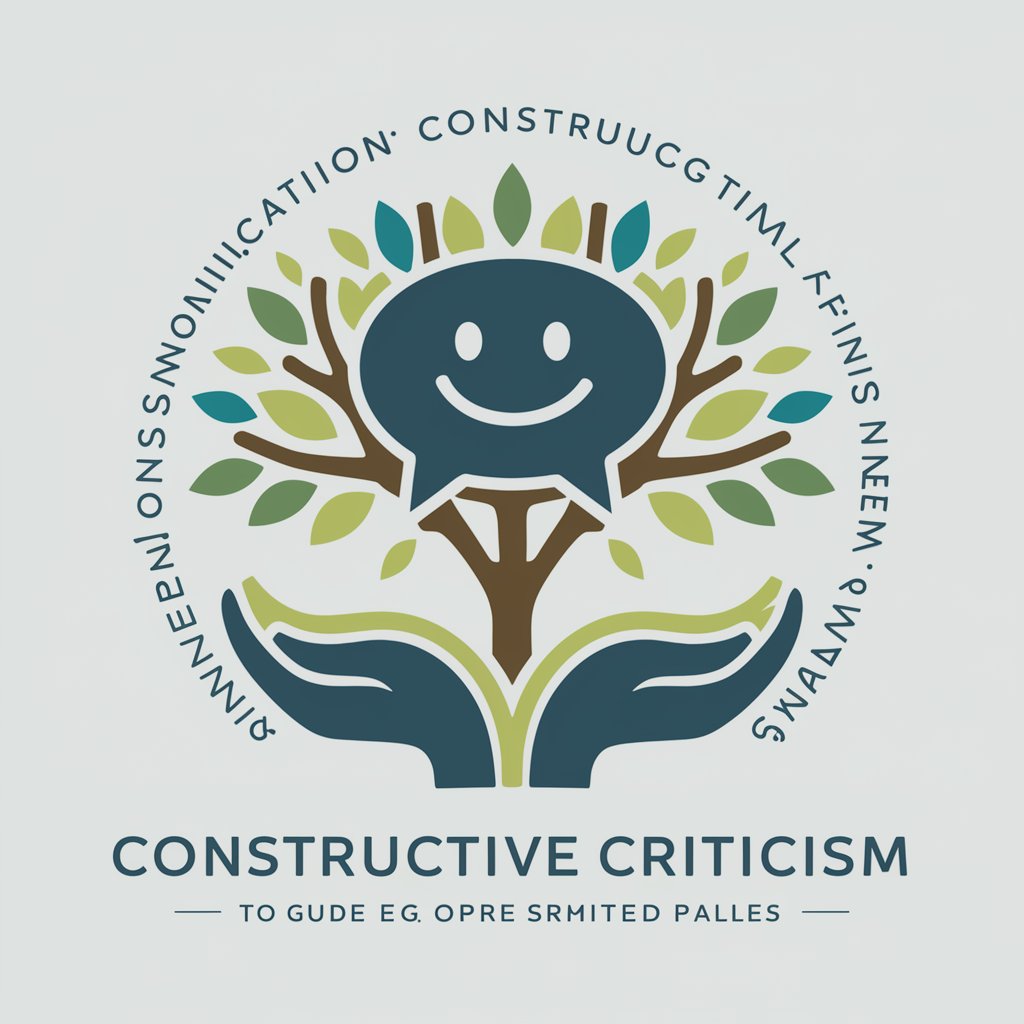
Welcome! Let's turn feedback into growth together.
Master Criticism with AI-Powered Guidance
When receiving feedback, it's essential to consider...
To effectively respond to criticism, one should...
A constructive way to view negative feedback is...
In order to grow from criticism, it's helpful to...
Get Embed Code
Understanding the Constructive Criticism Guide
The Constructive Criticism Guide is designed to assist individuals in effectively responding to feedback, particularly criticism that is intended to be constructive. The guide emphasizes understanding the critic’s perspective, extracting useful insights from their feedback, and fostering an environment conducive to personal and professional growth. The primary aim is to promote constructive dialogue and ensure that feedback sessions are both productive and positive. For example, consider a scenario where a manager provides feedback to an employee about improving their presentation skills. The guide would help the employee to process this feedback positively, identify areas for improvement, recognize the manager's intent to aid their career development, and construct a response that acknowledges the feedback, clarifies any misunderstandings, and discusses steps they would take to improve their skills. Powered by ChatGPT-4o。

Core Functions of the Constructive Criticism Guide
Understanding Criticism
Example
Helping users to decode the underlying message in the criticism they receive.
Scenario
An artist receives a critique that their art exhibition lacked coherence. The guide would aid in deciphering this feedback to understand specific concerns about thematic or stylistic inconsistencies and address them constructively.
Formulating Responses
Example
Guiding users to craft responses that are appreciative, reflective, and proactive.
Scenario
A software developer is criticized for repeatedly missing project deadlines. The guide would assist in acknowledging the issue, expressing gratitude for the feedback, discussing reasons for these delays, and outlining specific steps they will take to improve time management and productivity.
Encouraging Open Dialogue
Example
Encouraging users to engage in a meaningful exchange that fosters understanding and growth.
Scenario
A teacher tells a student that their essay arguments are weak. The guide helps the student to respond by thanking the teacher for the feedback, asking for specific examples or resources to improve their argumentation skills, and suggesting a follow-up meeting to discuss their progress.
Target Users of the Constructive Criticism Guide
Professionals in Feedback-Intensive Fields
Individuals such as educators, managers, and artists, who regularly give or receive structured feedback. They benefit from learning to handle criticism gracefully and use it constructively to foster professional relationships and personal growth.
Students and Trainees
This group includes university students, interns, and vocational trainees who frequently undergo performance reviews and require skills to effectively use feedback to enhance their learning and adapt to professional standards.
HR Professionals and Team Leaders
HR professionals and team leaders who must facilitate feedback among team members or between employees and management. The guide aids them in promoting a positive feedback culture that supports employee development and conflict resolution.

Guidelines for Using Constructive Criticism Guide
Initiate a Free Trial
Start by visiting yeschat.ai to explore the Constructive Criticism Guide without needing to login or subscribe to ChatGPT Plus.
Identify Your Needs
Determine the specific context or scenario where you seek to apply constructive criticism, such as workplace feedback, academic reviews, or personal development.
Engage with Prompts
Use specific prompts or questions related to your situation to generate tailored advice on handling and responding to criticism constructively.
Practice Regularly
Incorporate the advice into your daily communication to build resilience and enhance your response to criticism over time.
Evaluate and Adjust
Periodically assess the outcomes and adjust your approach based on feedback and personal reflection to continually improve your communication skills.
Try other advanced and practical GPTs
CodeCritic GPT
Enhance Code Quality with AI

Western Art Theory and Criticism II Tutor
Empower Your Art Insight with AI

Communication Criticism Tutor
AI-Powered Communication Insight
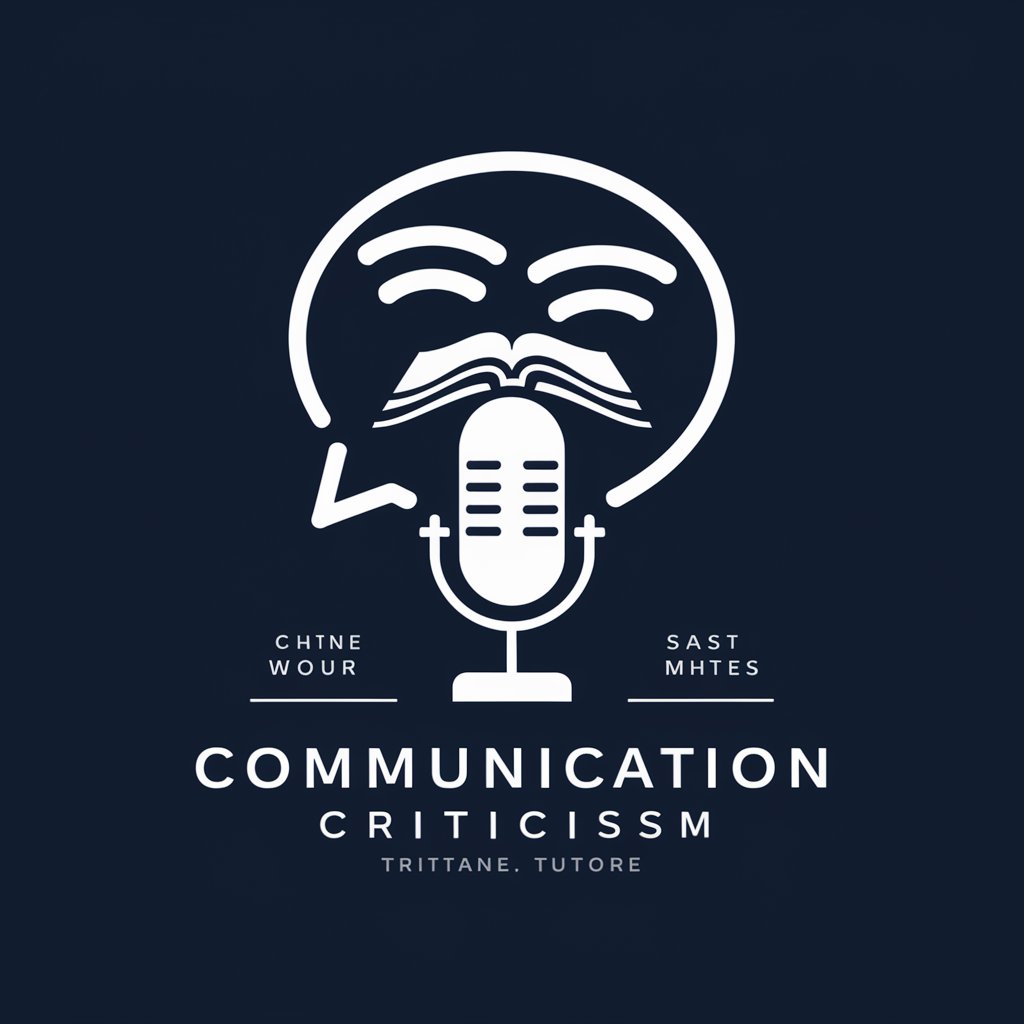
.NET Companion
Empowering .NET Development with AI

.NET Copilot
Empowering .NET Development with AI

🥰 Awesome .NET MAUI helper 💪
Power your .NET MAUI projects with AI

Leadership Constructive Criticism
Empowering Leaders with AI-Driven Insights

Chomsky AI
Powering Deep Linguistic Insights

AGI GPT project
Empowering innovation with AI

Criticise My Business
Optimize Your Business with AI Insights
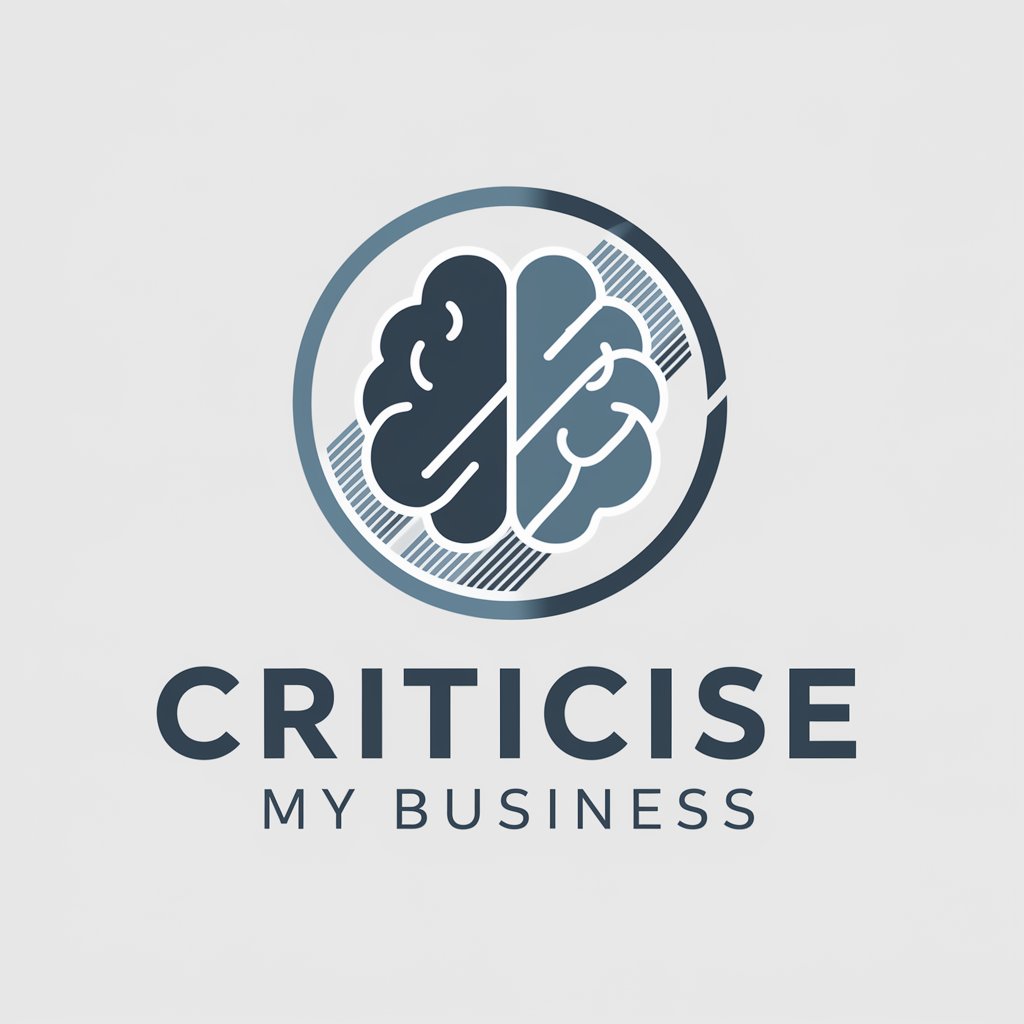
カメラマスター
Elevate Your Shots with AI-Powered Expertise

カメラ コンシェルジュ
Expertise at Your Shutter Click

Frequently Asked Questions about Constructive Criticism Guide
What is the primary purpose of the Constructive Criticism Guide?
The guide is designed to help individuals respond to criticism in a constructive manner, focusing on personal growth and effective communication.
Can the Constructive Criticism Guide be used for professional development?
Yes, it is highly beneficial for professional settings where receiving and responding to feedback is crucial for career advancement and workplace harmony.
How does the Constructive Criticism Guide improve personal relationships?
By teaching effective, empathetic communication strategies, it helps individuals respond thoughtfully to criticism, thereby strengthening personal connections.
What makes the Constructive Criticism Guide different from other communication tools?
It specifically focuses on the nuances of receiving feedback and offers structured, empathetic approaches to handling criticism constructively.
Is there a way to track progress using the Constructive Criticism Guide?
While the guide itself does not include tracking features, users are encouraged to note improvements in their communication and emotional responses over time.
